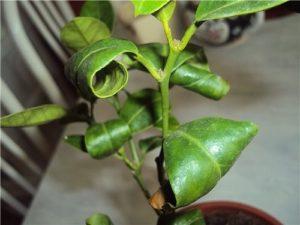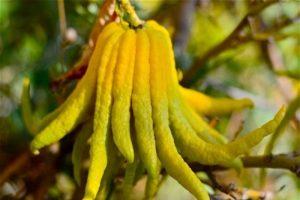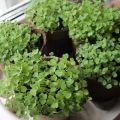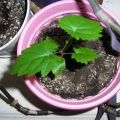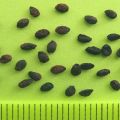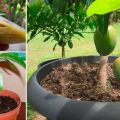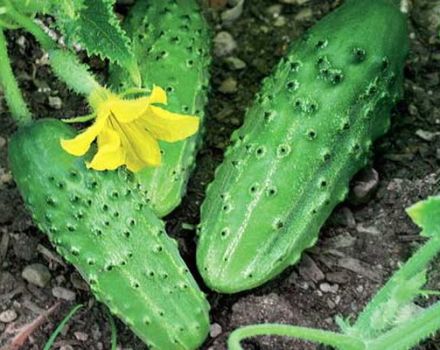How to grow a pomelo tree from a stone and take care at home
Growing any citrus plant at home is a responsible and painstaking task. However, the end result is worth it. Perhaps someone will argue that it is impossible to grow a pomelo on your own, but we have a different opinion. So, a small tree will not only decorate the home, but will also bear fruit with proper care. Therefore, below you will learn how to competently grow a pomelo at home.
Description and characteristics of the plant
The pomelo is a separate species, not a hybrid as some believe. However, it is used in breeding work. For example, citrus pomelo is a cross between pomelo and white grapefruit.
The tree grows, on average, up to 15 meters, has large leaves and a spherical crown. As for the flowers, they are single or 2-10 inflorescences. The color is white, with a diameter of 4 to 7 millimeters. The tree can bear fruit up to 7 months.
The fruit itself is quite large, the largest fruits can reach 10 kilograms. For the tropics, this is the order of the day. The pomelo is shaped like a pear or a ball. The color is red, yellow, pink or green. The rind is strong enough, but easy to remove. The pulp inside is divided into wedges and is rather dry compared to other citrus fruits. However, the taste is pleasant and sweet when ripe. The partitions between the slices, which should be cleaned, are bitter. The inside of the fruit also differs in color: white or red. The wedges may contain seeds.
The pomelo ripens around February. Stored for about 1 month in the refrigerator or at room temperature.
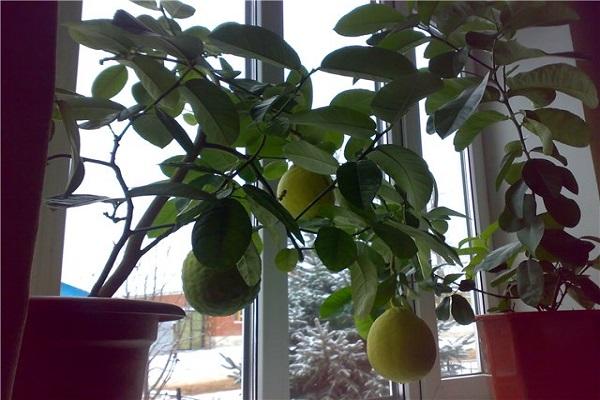
Tree varieties
In stores, as a rule, green or yellow citruses are found, characterized by a light shade of pulp. However, there are many more varieties of pomelo.
- Khao horn - white flesh inside, yellow-green peel, has a sweet taste.
- Khao namphung - inside the fruit is a light yellow color, itself - orange with a pleasant greenish tinge, the taste is sweet.
- Khao paen - white pulp, 12-15 lobules inside, oblong ball shape, green peel, sweet taste with sour notes.
- Khao phuang - yellow-white inside, green peel with an added yellow, sweet and sour taste.
- Thongdi - pink inside, dark green rind, sweet taste.
Reproduction
As you know, there are two types of citrus reproduction: seed and vegetative.As for the first option, the most powerful trees are obtained, however, one does not have to wait for fruits from them soon.
As for the pomelo, it is propagated exclusively by seeds, as well as by air layers.

Growing a pomelo from a selected seed at home
Exotic citrus, it turns out, is quite possible to grow at home, in which case it will please the eye all year round, and with a competent approach, it will also give useful fruits. Next, we suggest that you read the detailed instructions for growing citrus with your own hands.
Preparation of planting material
At home, pomelo is grown from seeds, which are taken from ripe and high-quality fruit.
Germination
Immediately before planting, it is advised to germinate the seeds. To do this, healthy and intact bones are taken out of the fetus, washed and dried, and placed in warm water for 12-16 hours. The bottom of the container in which they are located is covered with a material that absorbs moisture well. Next, the seeds are placed in a container and covered with any cloth or moss. In this state, they go to a warm place. As soon as they germinate, you can start planting.

Landing
Any pot or container is taken as a planting container, the main thing is that it has holes for water to drain. Drainage is laid down (pebbles, charcoal or expanded clay are suitable) and a small amount of humus.
The planting soil should contain:
- one part of sheet soil;
- two parts of sod soil;
- one part of sand;
- one part of humus.
Sprouted seeds are deepened into the ground by 2-3 centimeters.
Transfer
Like all citrus fruits, pomelos do not tolerate transplanting well, therefore transshipment is applicable in this case. Thus, the roots are minimally traumatized. The next planting container should be more spacious than the previous one. The pomelo is transplanted when the root system has braided the ground in a pot or if the citrus, for some unknown reason, grows slowly or does not bear fruit.
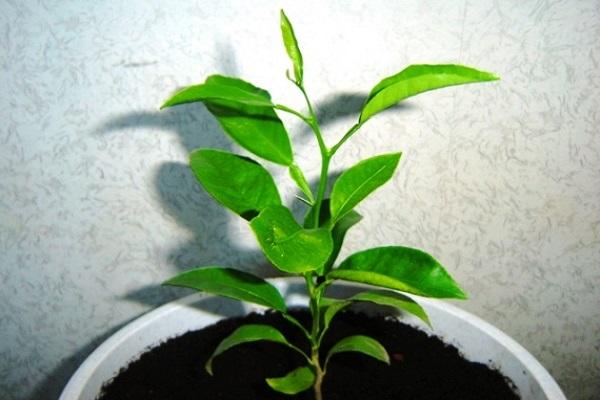
Necessary care
Next, we suggest that you familiarize yourself with some of the conditions, the fulfillment of which is mandatory for those who want to get a positive result from growing pomelo.
Temperature
Warm and humid air suits the pomelo - do not forget that this is a tropical fruit. In summer, the optimum temperature is up to +35 degrees, and the air humidity is 65-85%; in winter it is worth taking care that the temperature is no more than + 10-15 degrees.
Lighting
The choice of plant location is very important. The window sill will definitely not fit this role. It is necessary to position the plant so that the sheets are as much as possible illuminated by sunlight. Along with this, citrus fruits should not be placed close to heating radiators.
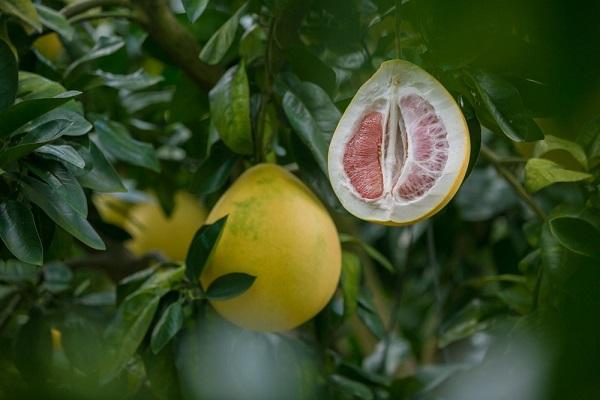
Watering
Watering in the spring and autumn is carried out as the visible part of the soil layer dries out. At the same time, the lump inside the pot should not be allowed to dry. To determine the degree of moisture, you need to take a little earth in your fingers and squeeze it. If the soil is crumbling, watering is needed.
It is worth controlling humidity daily, especially in the summer.
Fertilization
Fertilizers also play an important role in the process of self-cultivation of pomelo. For a plant to grow actively, it needs the following elements: calcium, phosphorus, magnesium, nitrogen, sulfur and others. Young plants need more nitrogen, which promotes the development of shoots and foliage. Phosphorus is good for the root system. Due to potassium, nitrogen is absorbed much faster. It also affects the appearance of shoots, ripening of fruits, makes citrus resistant to various diseases.
Crown formation
The formation of the crown is necessary not only for the plant to have a beautiful appearance, but also so that it begins to bear fruit earlier. First, decide for yourself what shape you would like to see. Most often, citrus fruits are rounded.Crown formation occurs in the same way as in other plants. The only problem that people face is that the pomelo does not give lateral branches for a long time; instead, only the upper shoot grows.
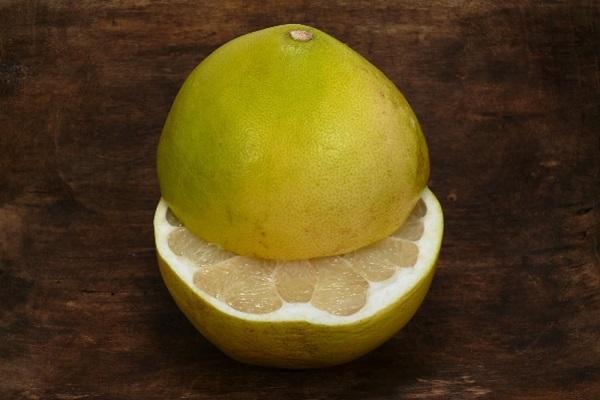
Seedling grafting
Reproduction of pomelo occurs by grafting on seedlings or using air layers.
Pests and diseases
The pomelo is often attacked by sucking and gnawing parasites, fungi and viruses. Enemies of the plant: spider mites and scale insects. They have to be dealt with with the help of chemical or biological agents, which, however, are suitable for greenhouses or open areas. As for the home, you should not use pesticides.
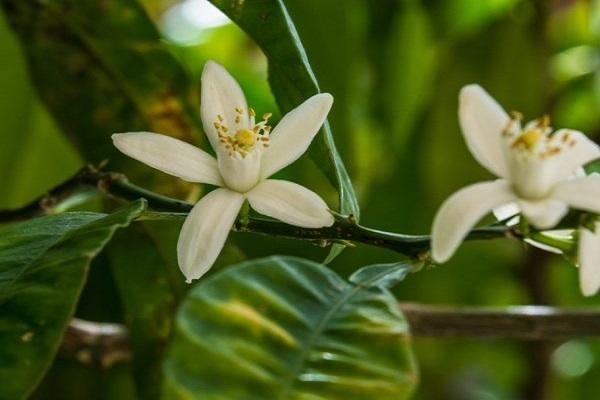
Harvesting and storage
Harvesting begins when the fruit is seen to be ripe. Only ripe fruits taste different and contain a maximum of useful vitamins for human health.
In terms of storage, ripe fruit is kept in the refrigerator or at room temperature for about one month. As for the already cut or peeled citrus, its shelf life is 2 days, since it dries quickly in this form.
